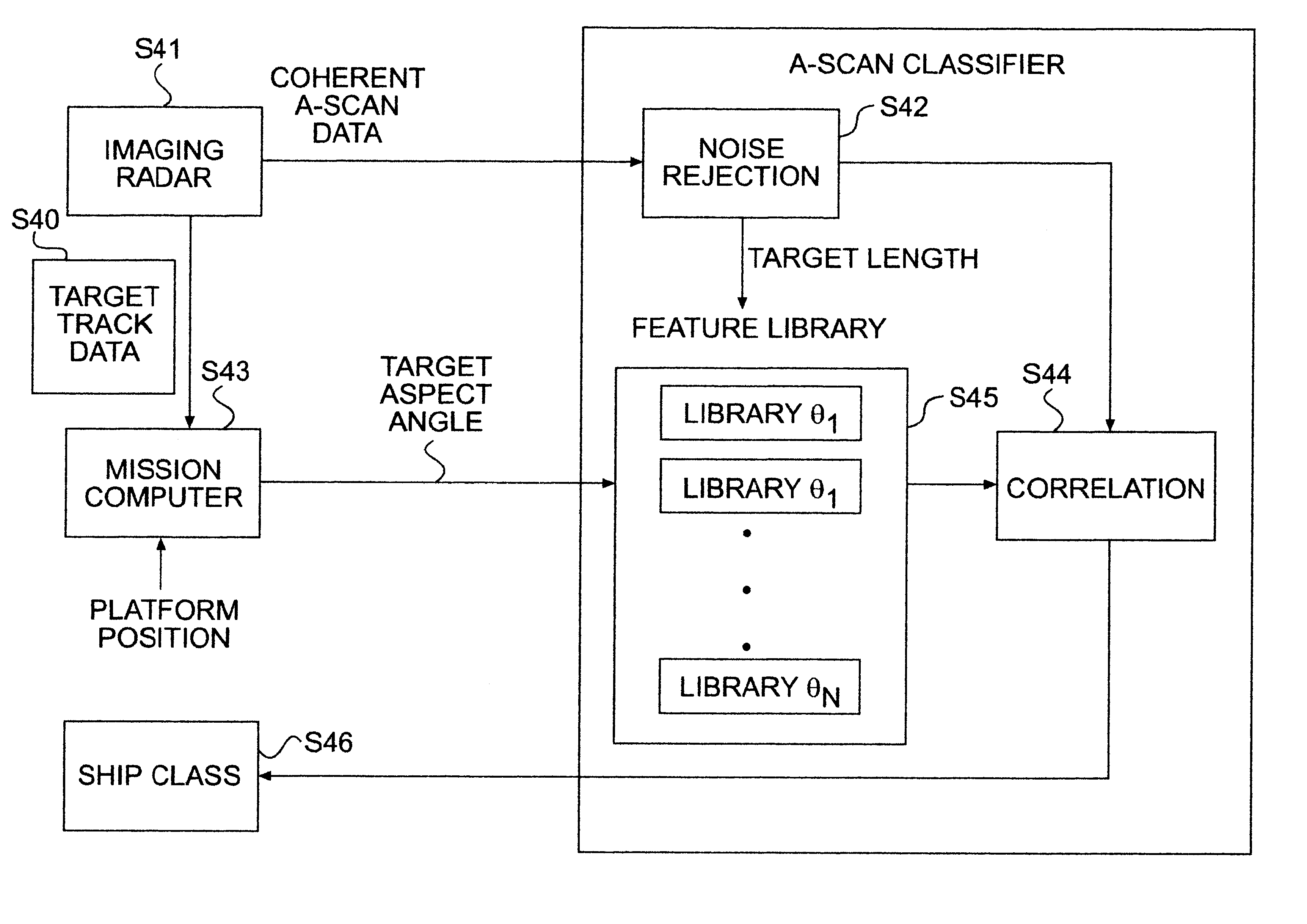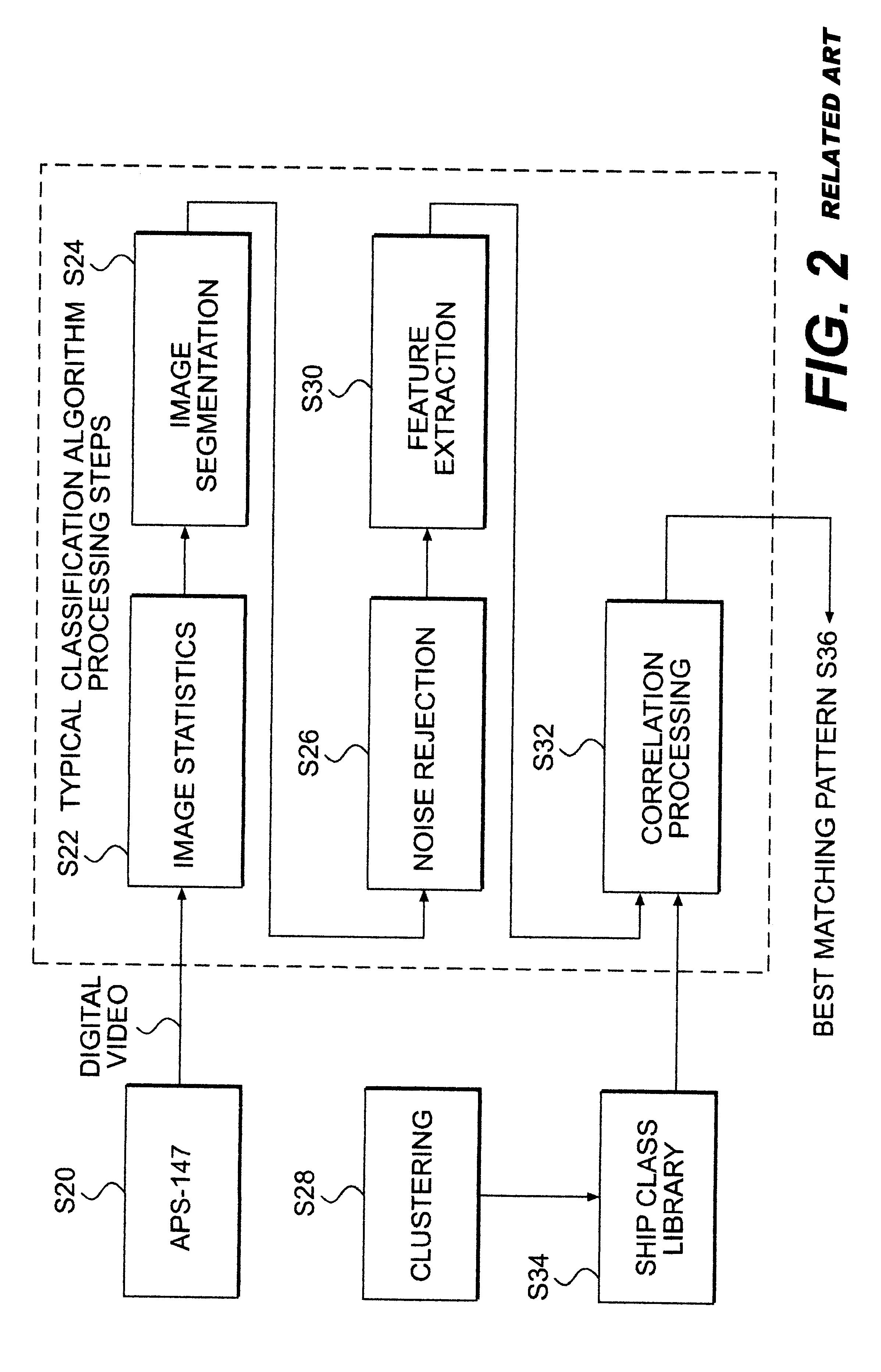A-scan ISAR classification system and method therefor
a classification system and radar technology, applied in the field of radar system and radar signature identification methods, can solve the problems of large antennas not being used, isar systems not being able to produce profile images of targets, and complicated profile image developmen
- Summary
- Abstract
- Description
- Claims
- Application Information
AI Technical Summary
Problems solved by technology
Method used
Image
Examples
Embodiment Construction
Referring now to the drawings and, more particularly to FIG. 1, there is illustrated, in highly schematic form, the basic environment of an inverse synthetic aperture radar system. All radar systems 1 basically include a transmitter 5 for generating an electromagnetic wave, and an antenna for radiation and receipt of the electromagnetic wave reflected by the target, and a receiver 15 for receiving the antenna collected energy and processing the same in a selective manner. It is, of course, preferred that the receiver 15 preserve as much information as possible that may be included in the reflected energy so as to accurately image the target 20.
Still referring to FIG. 1, the target 20 is depicted as a seaborne vessel such that the natural motion of the vessel such as, for example, pitching about an assumed center of rotation due to encountering waves, causes differences in relative motion of portions of the vessel. Thus, structural features farther from the center of rotation (e.g. h...
PUM
 Login to View More
Login to View More Abstract
Description
Claims
Application Information
 Login to View More
Login to View More - R&D
- Intellectual Property
- Life Sciences
- Materials
- Tech Scout
- Unparalleled Data Quality
- Higher Quality Content
- 60% Fewer Hallucinations
Browse by: Latest US Patents, China's latest patents, Technical Efficacy Thesaurus, Application Domain, Technology Topic, Popular Technical Reports.
© 2025 PatSnap. All rights reserved.Legal|Privacy policy|Modern Slavery Act Transparency Statement|Sitemap|About US| Contact US: help@patsnap.com



